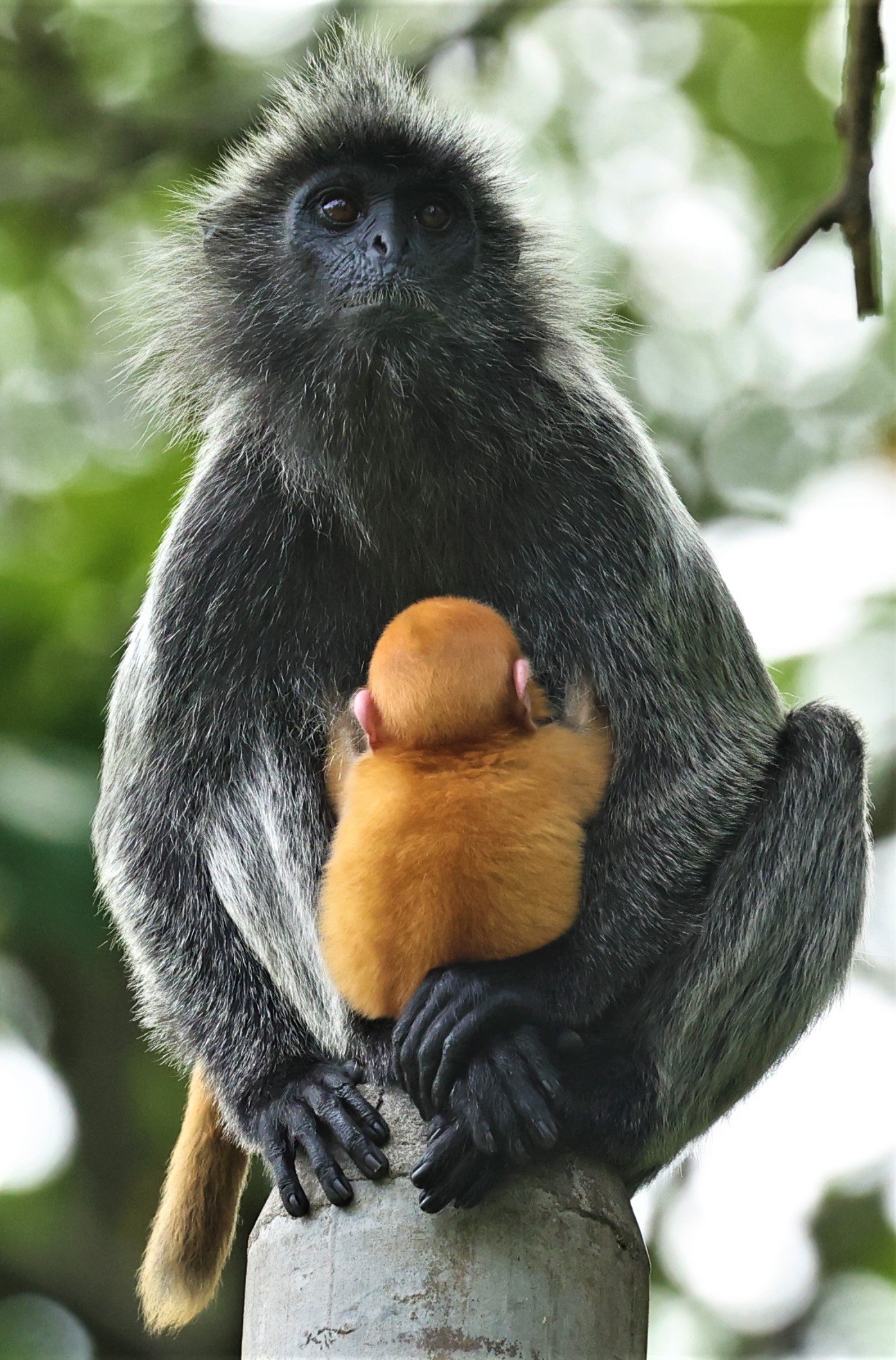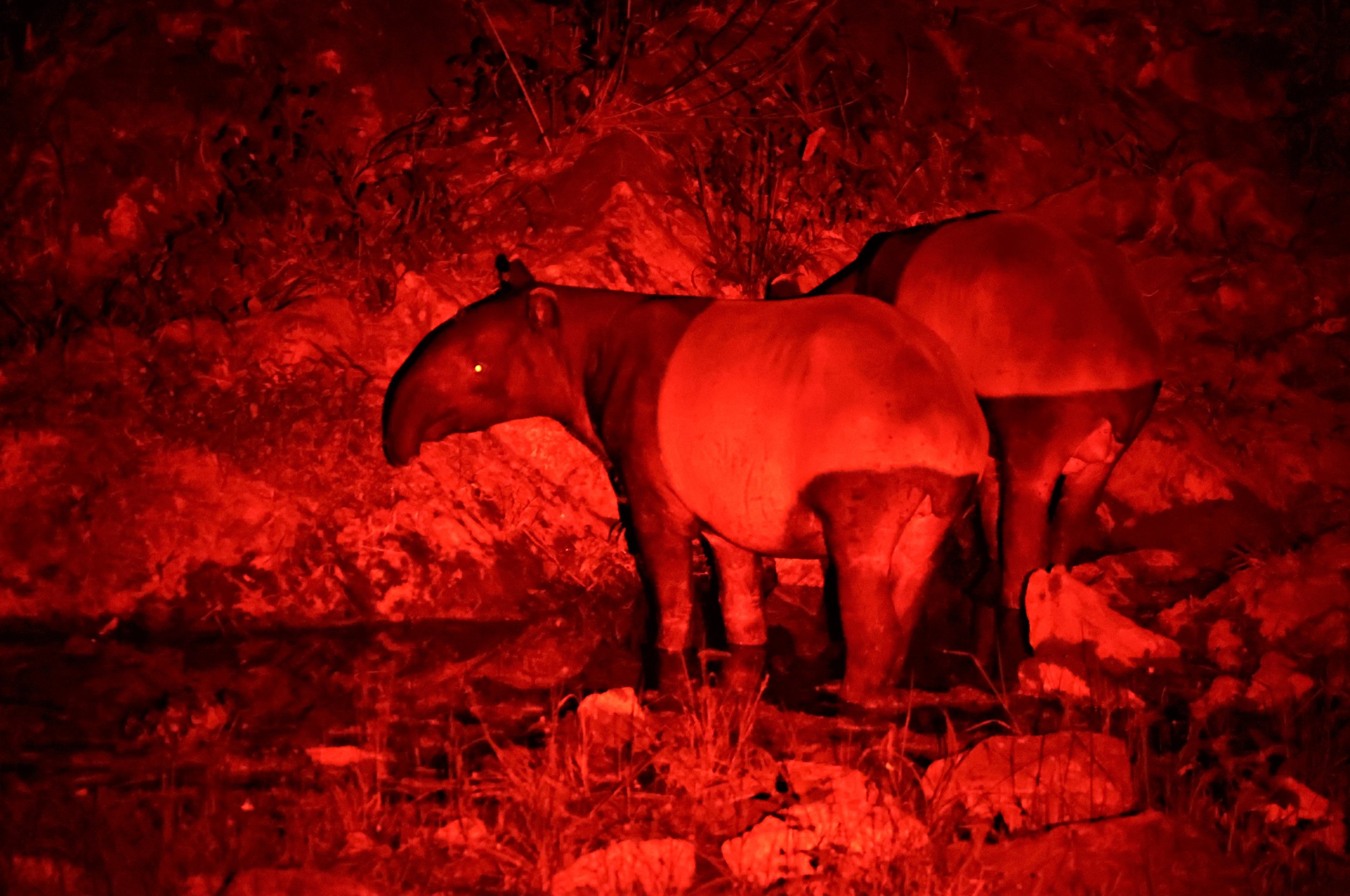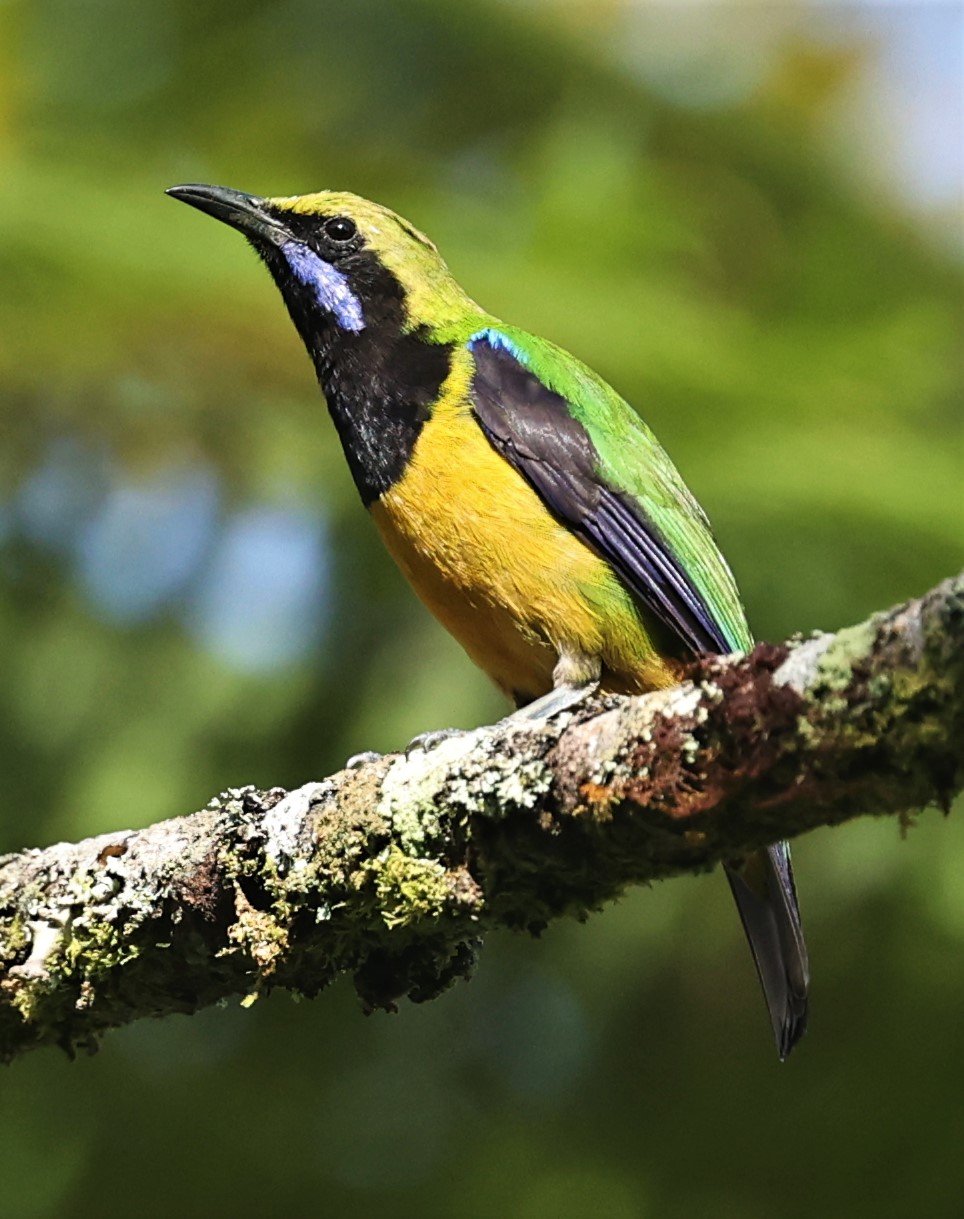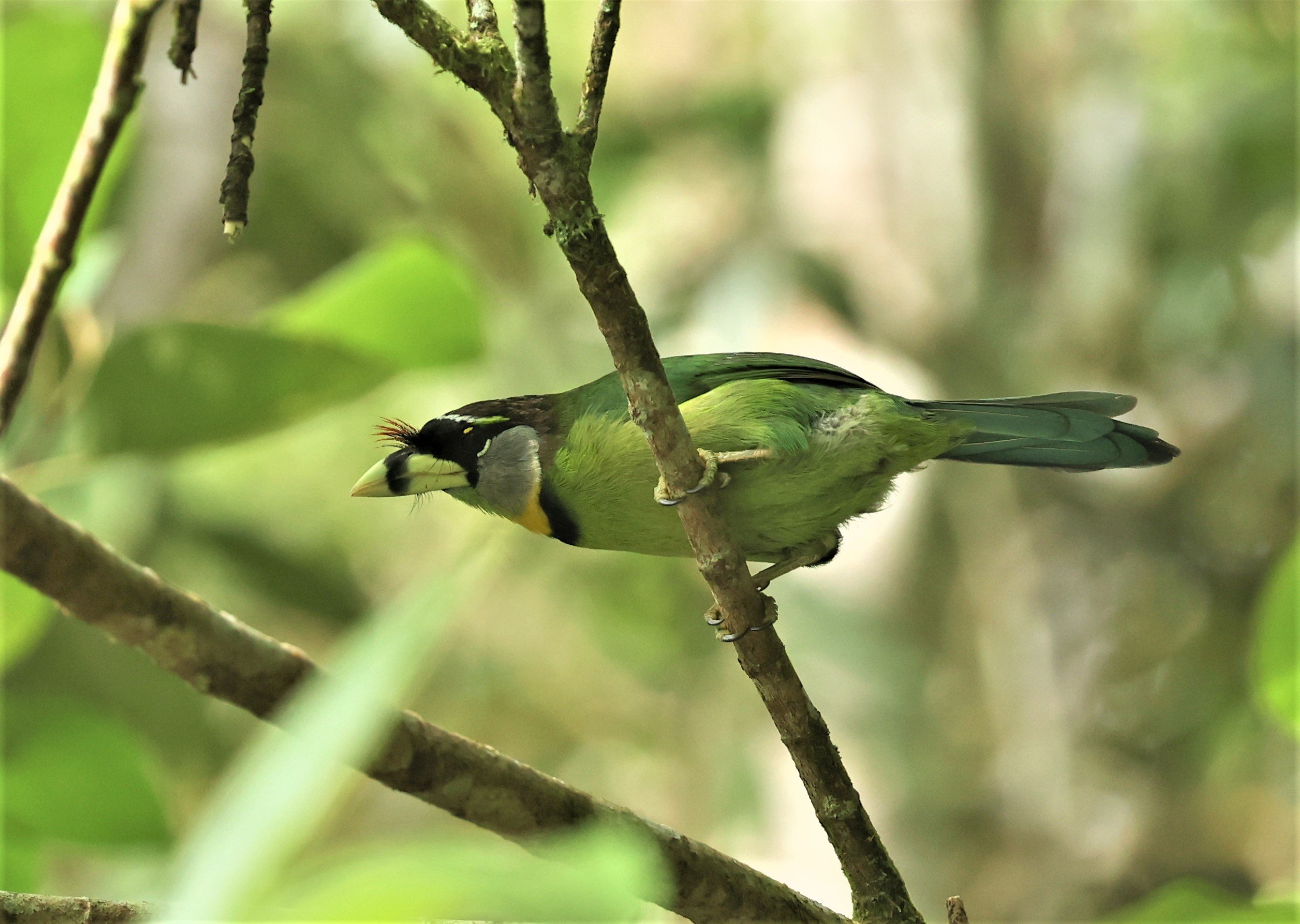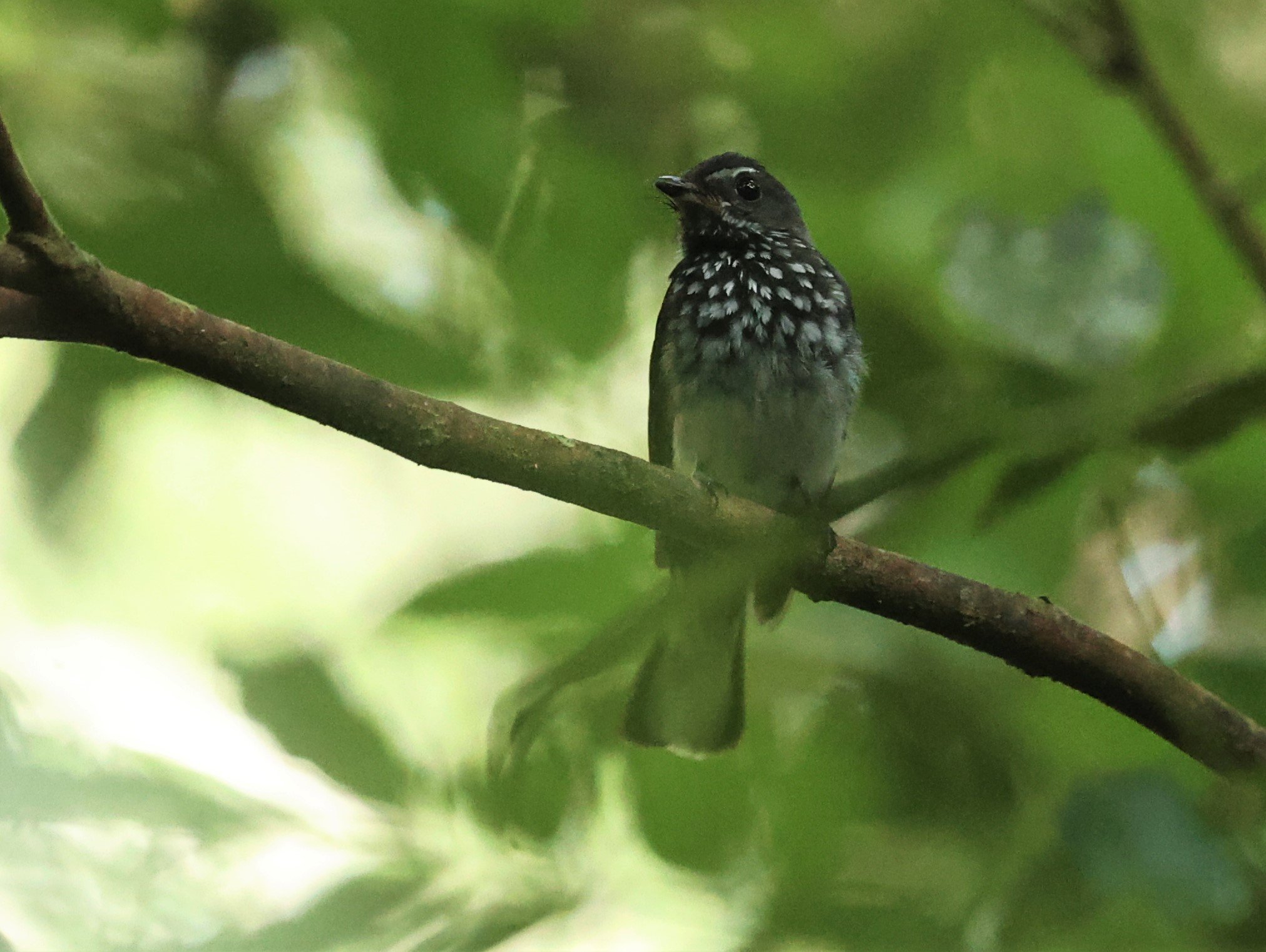
Malaysia 2022, Pursuit of Tapirs & Siamang!
June 24 - July 2, 2022
The title of this trip report should actually be “Malaysia, 2019”, but covid…. Not much more needs to be said unfortunately. Well it finally happened! We had a short trip but it was well planned and extremely successful. My primary goal for Malaysia has always been seeing wild Tapir as well as better views of the two primates I keep getting skunked on in Thailand – the White-thighed Surili and of course, Siamang. Actually I have seen the White-thighed Surili several times in Hala Bala but have yet to capture excellent images. And I’ve only heard the Siamang in Thailand, often frustratingly close. And of course, while Tapir are actually quite numerous in Thailand, seeing one would take a miracle from heaven!
Early in 2019, I contacted Andrew Sebastian for a trip to Peninsular Malaysia to see my targets. All the plans were made and tickets were purchased….and then covid….Who’d a thunk it would be over two years before the plans could finally come to fruition. Since my time was more limited this year, I thought it best to have Andrew take care of everything and it was a good thing I did. The trip was an unmitigated success! In five short days, we got all of our targets and some! I highly recommend Andrew - very professional and knowledgeable with a great eco-ethic. Contact Andrew Here
The report that follows is meant to be a basic description of the locations visited and the species encountered. My hope is that future travelers to the Peninsula are as successful as we were.
Images are linked to galleries with more images of the species in question. Click the link to see more! Here are two galleries that include a collection of images for….
Birds of Malaysia 2022 Expedition
Scenery and Family Pics of Malaysia 2022 Expedition
Day One: Bangkok to Selangor
After a short 1.5 hour flight from our home in Bangkok, we made it to KL for a short sleep in town and then a trip over to Selangor with our driver/guide Akmal, an outstanding local guide and very safe driver. Our only target for this location was the Selangor Silvered Langur that can be found quite easily at the Taman Alam Kuala Selangor Mangrove walk. It did not take more than one minute upon entry to the parking area for us to locate a large troop of the langurs. This troop is completely habituated and allows some great photo opportunities. I am thinking that simply going to this location is all the advice I need to give. Easy Peasy! You will also get the local Long-tailed Macaques as a bonus as well.
From Selangor, our next destination involved a bit of back-tracking through northern KL and then to the hill country. Our next two nights were spent at Bukit Tinggi, a lovely hill station in the highlands that is well known for Siamang and rare birds. We spent our nights at the extremely touristy Colmar Tropicale French-themed castle in the mountains. While it was exactly that – very touristy, we actually loved our room and amazing view it had of the surrounding rainforest-covered mountains. The buffet was quite good and Liana LOVED the Disneyland-like atmosphere. So did Gift for that matter.
Day Two – Bukit Tinggi
The quest for Siamang! We B-lined it straight for the famous Japanese Gardens which were a few kilometers from our lodging to search for Siamang. We got an early start just to be safe, but Siamang tend to be late risers and often don’t start singing until 8 or 9 AM in my experience. We did manage a few nice birds in the morning, and a few Spectacled (Dusky) Langurs feeding on leaves in the gardens.
We did try for the Mountain Peacock Pheasant that is the most famous bird for that location, but dipped. Evidently two years of covid and the lack of regular feedings has made seeing the bird a bit more based on luck. At around 8:30 or so, sure enough we heard at least two troops of Siamang start their chorus – one quite distant and one directly down the hill from us. We chased the song and I swear we were only a few meters away from the closest troop, as the sound was deafening, but no luck with a view. SO frustrating! This was turning out to be exactly like my experiences in Thailand with the “invisible” Siamang. 😉 Well, we had another day and a half to hope more opportunities.
After returning to the Colmar Tropicale and a bit of breakfast, I started to hear some the Siamang Song once again! And this time it was in the giant Ficus just next to the entrance of the castle! For the next two hours, I spent time with a very vocal and active troop that was feasting on the figs. Evidently they are in that tree, or in a similar one at the swimming pool area, every day throughout the year. As I was viewing these awesome near-great apes, I noticed Gift and Liana watching them from our room! Open the window and they had their own private show of Siamang!
The golf course is also famous for Siamang as the often come down for a public feeding. While I was not particularly interested in a “feeding show”, we did manage to receive a call (our guide made contact with the golf course manager just in case we were unlucky with more natural sightings – smart) that the Siamang had come down for some free fruit. We rushed over the golf course, which is a few kms away from the Colmar Tropicale, and caught the family troop returning to the surrounding forest. The close up views were actually quite spectacular. We missed the feeding, which as fine with us. The views of the family troop in the trees and the roof-tops heading back to their forest home was far more lovely to see.
At Tinggi, we spotted loads of Southern Pigtail Macaques, Plantain Squirrels, Slender Squirrels, Himalayan Striped Squirrels and a brief glimpse of a White-thighed Surili.
Day Three – Bukit Tinggi to Taman Negara
From Bukit Tinggi we headed to the lowland rainforests of Taman Negara. Our lodging was the highly rated Mutiara Taman Negara Resort. The resort is quite nice and is situated right in the rainforest. The walk to our room however was several hundred meters and was hot as hell, so take that into consideration when making lodging decisions. The resort is quite isolated and we agreed we would opt for other lodging options the next time we go there. During our entire trip we all felt a bit under the weather, so even a slight trek was a bit more taxing than it would be otherwise. Combine our condition with the oppressively hot and humid weather, and we were all pretty room-bound while there. At least Liana and Gift had the nice room to stay in while I trekked to Kumbang Hide in hopes of seeing wild Tapir.
Kumpang Hide, Taman Negara
There is little doubt that Kumpang Hide is the main reason for mammal-watchers to come to Taman Negara. While the forests are filled with various species of mammals, Kumpang Hide is world famous for being the ONLY place that allows a reasonable chance to actually see a wild Malayan Tapir in its natural habitat. The journey to the hide involves about an hour-long boat-ride upstream from the Mutiara pier. And from there it is another four or five kilometers through lovely rainforest to the hide. I would recommend renting the entire hide for yourself if at all possible, as it would be a pity to get booked with noisy tourists who might ruin your chances.
As I was actually feeling quite ill by this stage of our trip, what would have ordinarily been an easy trek ended up being an ass-kicker. At the time, I was thinking I simply had a medium cold or flu, but after we returned to Bangkok, we all tested ourselves and found that we were all Covid Positive the entire time we were in Malaysia. And my trek to and from the hide, I was at peak covid! I had no idea! I am actually glad I did not know as I probably would have cancelled one of the mammal-watching highpoints of my entire life!
The trek through the forest of Taman Negara was spectacular. Loads of wildlife and signs of such species as Malayan Tigers and the sounds of Agile Gibbons, it is trek worth taking even if a Tapir were not the reward at the end! Kumpang Tower is not your typical hide – it is simply an elevated viewing tower near a mineral lick in the middle of the rainforest. It provides a suitable vantage point to hopefully see the wildlife of the forest when they come in for minerals. And not only did we see a wild Malayan Tapir, we saw THREE! Two adults and a young one! I believe it was around 2AM that we first spotted them but evidently they returned several times throughout the night, although after the first sighting, I was horizontal and dead to the world for the rest of the night. But I had my Tapir! I was absolutely thrilled! And spending time with Andrew and his team in their element was a bonus! I would highly recommend this experience.
Day 4 – Horizontal at the Mutiara
After a trek back to the Mutiara, I slept for the remainder of the day – no energy for anything else! I did manage a bit of late afternoon squirrel watching but only managed Grey-bellied Squirrels in the grounds of the resort. I had absolutely no idea I was deep in the realm of Covid at this point. All I knew was I had virtually no energy whatsoever. Now looking back on it, I feel very fortunate that my case of Covid was actually quite mild compared to others. Luckily Gift and Liana also had minor cases comparatively.
Day 5 – Negrito-Batek Village - Bukit Fraser
Andrew knew of my interest to see a Garnet Pitta, which is definitely one of the avian highlights of Peninsular Malaysia. And before our trip he and his team were able to stake out a nesting pair at Negrito Batek village about an hour downstream. The journey to the village was quite interesting and well worth the effort. The Negrito people are the First Peoples of Southeast Asia. I had visited the Manik (Sakai) people in southern Thailand before and knew their history a bit. And visiting this village in Peninsular Malaysia was simply awesome.
Andrew is trying to create an ecotourism partnership with the village where they could be trained as guides and stewards of their patch of forest. I would highly recommend this option when booking with Andrew as it is a fascinating experience to see these master trackers in action in the forest.
While in the village, I was introduced to an orphaned Sunda Slow Loris who was being kept as a pet. The mother was evidently killed and the orphan was left to fend for itself so the villagers adopted it. Normally it would be impossible to photograph this species so close and in the daytime.
A short trek into the surrounding forest, we found the stake-out for the Garnet Pitta. I did not need to wait more than a few minutes before a small bird was seen popping about on the forest floor. The light was quite dim, and the forest was quite thick, but I was finally able to capture a few images and some excellent views of this rare and awesome pitta species.
Day five was finished with a three hour or so drive to Bukit Fraser, were we were to spend the next nights at the MCM Nature Discovery Villa!
Days 6-8 – Fraser’s Hill
One cannot overstate how nice MCM Nature Discover Villa is. The owner of the MCM is the owner of the famous Stephen’s Place, well known by birders and mammalers alike. The original Stephen’s Place was not open during out stay but the owner is also the owner of the MCM Nature Discovery Villa. Stephen is a wonderful host who is a currently retired photographer and videographer who had a stellar career with BBC, Nat Geo and countless other nature organizations. He has a wealth of fascinating stories of his long and fascinating career. And Stephen is an expert on all that is flora and fauna on Fraser’s Hill. He definitely helped make sure I made all my targets when there. My main mammalian target was the White-thighed Surili, which is actually quite common the hill. Stephen also set me up with a great local guide for some easy morning birding, which Bukit Fraser is very famous for.
Two full days at Bukit Fraser left us only wanting more! Both Gift and I were thoroughly impressed with Malaysia. Sharing a border with Thailand, it was amazing how civilized Malaysia was. Drivers were mostly sane and safe, and rules clearly meant something. People there were so much more friendly and curious than here in Thailand….The food may not be as incredible as Thai food though…. 😉
Fraser’s Hill is without a doubt one of the biodiversity hotspots for Peninsular Malaysia. Due to my condition, I did not search too hard for other mammals and did rather lazy birding one morning. Seeing how it is a very short trip from our home in Thailand, I know I will return hopefully with a bit more energy. I did manage some spectacular birds though and here are some highlights. I have assembled galleries as well so simply click the below images to see additional images of the species shown. Have fun!
Click on the names below to visit my galleries of images for each species
Species List
1. Selangor Silvered Langur
2. Long-tailed Macaque
3. Southern Pigtailed Macaque
4. White-thighed Surili
5. Dusky Langur
6. Plantain Squirrel
7. Slender Squirrel
8. Western Striped Squirrel
9. Grey-bellied Squirrel
10. Striped Ground Squirrel
11. Sunda Slow Loris
12. Malayan Tapir
13. Agile Gibbon (voice only)
14. Malayan Tiger (very fresh pug marks on trail to Kumpang Hide)
15. Siamang


